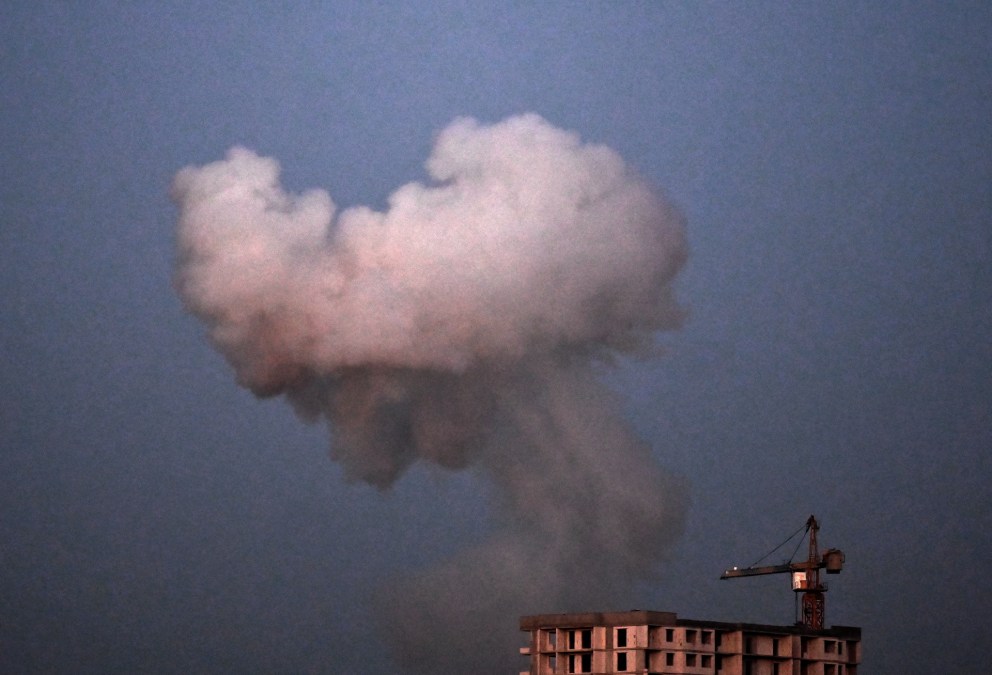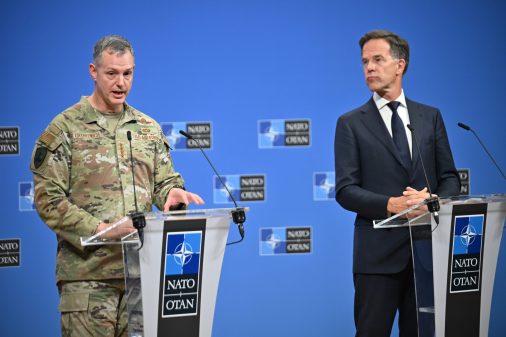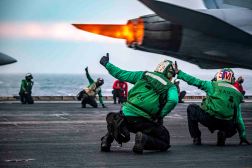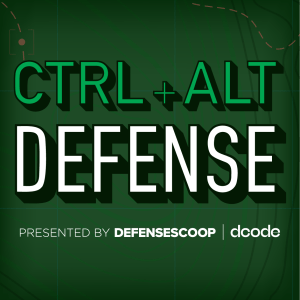How the war in Ukraine is shaping NATO’s approach to future fights

NATO allies are expanding efforts to connect their technology and weapon systems, standardize data processes and induce more flexibility in combat formations to prepare for future conflicts, according to the top alliance and U.S. commander in Europe.
“We’re going to have an EW-dense, unmanned-dense environment — no matter where we fight,” Gen. Alexus Grynkewich said Thursday, referring to electronic warfare and drones.
During a keynote delivered via video at NDIA’s Emerging Technologies for Defense summit, Grynkewich, who officially became Supreme Allied Commander Europe and commander of U.S. European Command in July, shared new details about NATO’s near-term digital transformation plans and how they’re influenced by contemporary battlefield conditions.
“If a Ukrainian brigade flies a drone on Monday, it might work — but by Wednesday, it might not, because of the robust electronic warfare environment or changes in adversary tactics,” he said. “Rather than just accept that they’ve got a bunch of things that don’t work, there’s a relationship with an industry partner who allows them to rapidly innovate and change what that drone’s basic parameters are. And so by the next Monday, that drone is once again effective, and they didn’t waste money on buying a bunch of them.”
That speed of innovation “has got to be built into” the NATO alliance’s future warfighting strategies and combat formations, he added.
Further, as the Defense Department reshapes its acquisition processes under the new administration, he said a major challenge will involve determining the right balance between needs-driven requirements and interoperability, versus the level of operational and tactical innovation that’s going to be permitted in order to adapt to rapidly changing battlefield conditions in real-time.
“That, to me, is the central problem of our time,” Grynkewich said.
In his speech, the former fighter pilot repeatedly called on industry representatives in the audience to help enable new technology solutions for the alliance.
“I’d also challenge everyone to find a partner — either go to Israel, go to Ukraine — find someone who’s been in combat lately. Take the things that you think you’ve made that are really good, and go see if they really are,” Grynkewich suggested. “We’ve had a few companies that have tried that, but not enough in my view. And the few that have tried it either learned a lot or they decided to go home because they can’t compete enough in that environment.”
Pointing to other modernization priorities, he said NATO members are moving to tackle complex challenges associated with interoperability between their platforms, as well as data standardization at a technical level.
“[The vision is] having connectivity between our formations, having every aircraft being able to talk to every aircraft, every ship able to talk to every aircraft, every unit of action on the ground talk to every other unit of action on the ground, and the shooters in the air and in maritime,” Grynkewich said. “So that’s work that’s ongoing.”






